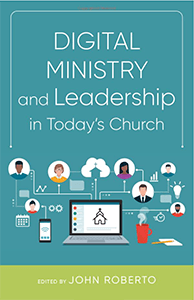How do you effectively share your congregation’s story via social media to reach new people? Tim Welch offers seven tips for sharing your congregation’s story on various social media platforms.
One of the best forms of communicating with church members is through digital platforms. Most of your congregation has immediate access to web-based content or smartphone apps. This makes spreading information quick and easy. By sharing information through a storytelling format, you can better engage and connect with your congregation. Leaders need to be familiar with the several essential tools so they may choose the most appropriate ones for their audience and their own skill set.
Social media is outreach.
A website can be like a large, rich garden of information and stories about a community that stays in the same easy-to-find location. Social media platforms (Facebook, Instagram, Twitter, Pinterest, TikTok) are like seeds being scattered in all directions, each post, easily shareable, containing a glimpse of the larger story. People are on social media. We need to tell our story where people are.
Social media is frequent.
Social media items are meant to be short and frequent, each being easy to consume and meant to keep a community’s story ever fresh in the public’s eye. The power of social media is that it can capture the attention of a wide community and then drive readers back to a congregation’s website or blog for further information. Think of social media as outreach, going out to people, whereas a website is the home base dependent upon people coming to it. Many organizations post news or informational headlines on social media that link back to their home page.
Social media is ongoing.
Conceptually, a website is a bulletin board of information, whereas social media is an ongoing conversation. Social media are the seeds throughout the cyberworld that, by nature, continue to shape the culture of the church community. Since social media is a stage for attracting attention, it is a place where photos and graphics can tell short, effective stories with few or no words. Memes that go viral are examples of graphics supporting a larger story.
Here are several important things to remember as you design social media platforms.
1. The social media platform needs to reflect the life of your community in posts, photos, and videos.
2. A moderator is needed to regularly engage with people participating in a particular social media platform. This is hospitality — watching, reading, responding, and interacting.
3. Social media needs to be monitored constantly. Unfortunately, comments can be negative and even cruel. Be clear about your rules of engagement and state that hostility will not be tolerated. When necessary, delete posts and even block people from posting. This is a time to tell the story of God’s love and how we are called to live faithfully.
4. One well-done post, graphic, or video is better than five hastily created posts. We want to present our story with the elegance it deserves.
5. There are wonderful people on social media who you will want to share with your church. Since you have no control over what they may post, use caution in recommending authors on your official pages and groups.
6. One of the advantages of posting in social media and on your blog is that you can schedule publishing times in advance. You can create multiple posts and schedule them to appear at different times.
7. We need to be careful with stories and photos or videos of children on social media. Be sure to follow church protocols for publishing stories, such as refraining from publishing faces connected with identifying information.
Social media platforms
Facebook, Twitter, Instagram, Pinterest, and TikTok are five of the largest and most popular social media platforms to use. They allow you to post text, photos, videos, and links to other online places and resources. There are many similarities among each platform in the dynamics of posting, commenting, replying, and sharing of posts. Each platform has a special niche and audience(s).
Facebook pages (facebook.com) can be thought of as mini-websites, homes for your organization on Facebook. Posts contain text, graphics, stories, and videos. Livestreaming can be offered on Facebook, with a scrolling comment area for participants to interact. Facebook Groups allow people with similar interests to “gather” online asynchronously and share ideas and explore questions. Messenger rooms are video chat environments where more than one person can join in a session, similar to Zoom.
Twitter (twitter.com) is built on the premise that short is best. It allows for short texts and photos. But you can also “tweet” links to websites with longer posts.
Instagram (instagram.com) has placed its emphasis on photos, stories, and short videos. It can be integrated with Facebook, who owns it, to have a post appear both places.
Pinterest (pinterest.com) is an image-hosting and image-sharing platform designed for projects, which it calls “boards.” Think of Pinterest as a virtual pinboard or bulletin board but with organizational and bookmarking tools. Saving and sharing your Pinterest ideas is centered around boards, with each image dubbed a “pin.” You can create a board for just about anything and pin any picture to that board.
Determine the story you want to create and share, then find the right tool(s) to help you communicate the story to your audience. Stories teach us who we are and who we want to be. They can inspire your community to action.
 Excerpted from “Digital Tools and Methods for Ministry and Faith Formation” by Tim Welch in Digital Ministry and Leadership in Today’s Church (Liturgical Press, 2021) edited by John Roberto. Used by permission. The book is available at Liturgical Press, Cokesbury, and Amazon.
Excerpted from “Digital Tools and Methods for Ministry and Faith Formation” by Tim Welch in Digital Ministry and Leadership in Today’s Church (Liturgical Press, 2021) edited by John Roberto. Used by permission. The book is available at Liturgical Press, Cokesbury, and Amazon.
Related Resources
- Two Approaches to Digital Playlists for Faith Formation by John Roberto
- 4 Audiences for Digital Engagement by Jessica L. Anschutz
- Building Vibrant Community Connections in Digital and Physical Spaces featuring Jordana Wright — Leading Ideas Talks podcast episode | Podcast video | In-depth interview
- Getting Your Congregation’s Story Right By Gil Rendle
Social media icons by rawpixel.com and clouds by onlyyouqj on Freepik







